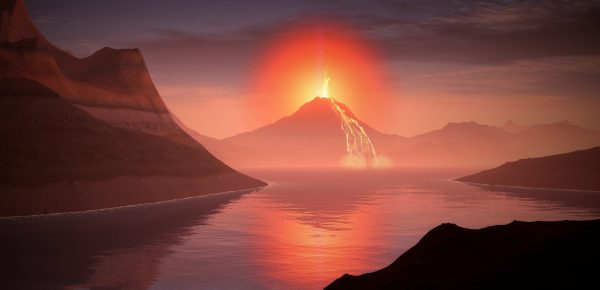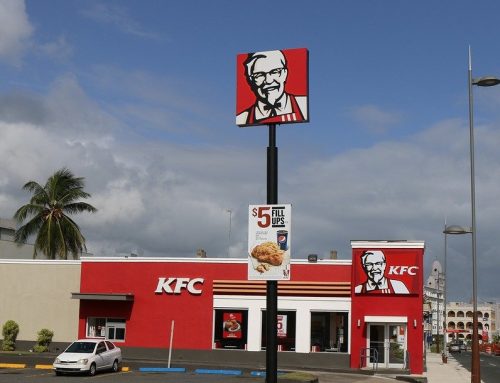Wie Sie das Erdinnere in 3D bestaunen können.
Als Kind hätte Tommaso Santagata, Höhlenforscher und Experte für 3D Höhlen-Mapping, nie gedacht, dass er einige der neuesten und innovativsten 3D-Scantechnologien für die zukünftige Weltraumforschung testen würde. Im Jahr 2017 verbrachte er fünf Tage für intensives Mapping auf Lanzarote, während der PANGEA-X (Planetary Analogue Geological and Astrobiological Exercise for Astronauts), einer analogen Feldkampagne der europäischen Weltraumorganisation (ESA). Während die ersten Ergebnisse durch diesen bahnbrechenden Kurs erzielt wurden, hat der abenteuerlustige Höhlenforscher den größten 3D-Scan einer Lavaröhre auf der Erde gemacht.

Zusammen mit den Geologen Umberto Del Vecchio und Marta Lazzaroni mappten diese den größten Teil des Lavaröhrensystems im Rahmen eines vom Cabildo von Lanzarote und der Universität Padua, Italien, unterstützen Projekts. Die daraus resultierende Map wird sehr detailliert dargestellt und hilft den lokalen Institutionen, diese unterirdische Umwelt zu schützen. Es liefert auch wissenschaftliche Daten, um die Herkunft der Röhre und ihre besonderen Formationen zu untersuchen.
Das Gelände.
Die PANGEA-X-Expedition wagte den Sprung in die Lavaröhre „La Cueva de los Verdes“ auf der spanischen Insel Lanzarote, einen der weltweit größten Vulkanhöhenkomplexe mit einer Gesamtlänge von rund 8 Kilometern. Die Höhle hat sowohl trockene als auch wassergefüllte Bereiche.
Der 6 Kilometer lange, trockene Teil der Lavaröhre weist natürliche offene Dachfenster auf, die entlang des Höhlenwegs ausgerichtet sind. Einige der Höhlen sind groß genug, um Wohnstraßen und Häuser aufzunehmen.
Diese Formationen ähneln denen auf dem Mars und auf dem Mond. Als unterirdische Strukturen bieten sie einen guten Schutz vor Strahlung. Diese Ähnlichkeit macht Lanzarote zu einer großartigen Umgebung, um Astronauten auszubilden und die Weltraumforschung zu simulieren.
Warum 3D-Mapping in einer Höhle?
Wenn eine neue Umgebung entdeckt wird, ist das Mapping des Gebiets immer ein erster Ausgangspunkt für die Erkundung, Dies gilt auch für Missionen auf anderen Planeten, wo eines der Hauptziele darin bestehen wird, Orte für den Aufbau des Basislagers zu wählen.
Lavaröhren sind Umgebungen mit konstanter Temperatur, abgeschirmt von kosmischer Strahlung und geschützt vor Mikrometeoriten und könnten so sichere Lebensräume für den Menschen bieten.
Die genaue Messung der Geometrie von Lavahöhlen wird es Wissenschaftlern ermöglichen, ihre Modelle zu verbessern und ihre Entwicklung an anderen Himmelskörpern besser zu verstehen.
Aus diesen Gründen hilft das Erlernen des Mappings von Lavaröhren auf der Erde bei der Erforschung der Erde. Der ESA-Astronaut Matthias Maurer nahm an der Expedition teil, um zwei verschiedene von Leica Geosystems entwickelte Instrumente zu testen, den Leica Pegasus:Backpack und den Leica BLK360.
Mobile Mapping.
Das mobile Mapping-Team von Leica Geosystems schulte Maurer in nur 20 Minuten in der Bedienung des Pegasus:Backpack.
Der Astronaut ging durch das schwierige Gelände und überprüfte die Ergebnisse vor Ort mithilfe eines Tablets. Er führte seine Mission zum Höhlenmapping durch, indem er entlang der Röhre und zurück ging, um die Genauigkeit der Daten zu vergleichen.
„Das Wandern und das geologische Mapping mit dem Hightech-Rucksack war einfach und effizient. Es kann perfekt in unsere Raumanzüge für zukünftige Erkundungsmissionen zum Mond oder Mars genutzt werden“, sagte Maurer.
Der Pegasus:Backpack synchronisiert Bilder, die von fünf Kameras und zwei 3D Bildgebungs-LIDAR-Profile, dem Laseräquivalent des Radars, gesammelt wurden. Es ermöglicht eine genaue Zuordnung, wenn die Satellitennavigation nicht verfügbar ist, wie beispielsweise in Höhlen.
Die Missionen.
Das Team hat mit dem Pegasus:Backpack zwei verschiedene Akquisitionen durchgeführt, um alle in dieser Lösung integrierten Positionierungstechnologien zu testen. Beide Missionen wurden mit der Leica Pegasus Manager Software bearbeitet.
- Die fusionierte Simulaneous Localisation and Mapping (SLAM) Mission
Angefangen vom Außenbereich mit guten GNSS-Bedingungen über dem Innenbereich unter schwierigen GNSS-Bedingungen mit sehr geringer oder gar keiner Satellitenabdeckung bis hin zum Abschluss der Mission im Freien mit guten GNSS-Bedingungen. Für diese Art von Mission setze das Team mehrere Positionierungstechnologien ein: GNSS + Trägheitsmesseinheit (IMU) + SLAM. Die Verarbeitungssoftware erkannte automatisch die verschiedenen Phasen der Mission.
Der Pegasus:Backpack, die erste positionsagnostische Lösung, konnte die Bewegungen von Maurer während der Datenerfassung verfolgen und die IMU nahm sie 125 Mal pro Sekunde auf. Auf diese Weise erhält das Team eine erste gute Trajektorie mit höchster Genauigkeit sowohl zu Beginn als auch am Ende der Mission. Das Team musste die Berechnung für das Teil mit Null-Satellitenabdeckung mittels SLAM verstärken. Zu diesem Zeitpunkt werden keine Bilder oder Punktwolken erstellt. Der Teil der Mission ohne GNSS-Informationen verwendete die im vorherigen Schritt erhaltene Trajektorie als Eingabewert für die Verarbeitung des SLAM-Algorithmus. Das Ergebnis ist eine verbesserte Trajektorie mit einer Schätzung des Positionierungsfehlers, bei der Punktwolken, Bildorientierung und sphärische Ansichten erzeugt werden.
- Die reine SLAM Mission
Eine reine SLAM-Mission ist typischerweise eine Mission in GNSS-begrenzten Umgebungen, wie Gebäuden, Höhlen und Tunneln. Die wichtigsten für diese Art von Mission verwendeten Positionssensoren sind der Kompass, die IMU und SLAM Only LiDAR (So LiDAR). Bei richtiger Einstellung der Parameter konnte die gesamte Mission mit einem einzigen Klick bearbeitet werden. Eine grundlegende Trajektorie des Pegasus: Backpacks wurde mit Informationen aus dem Kompass und der IMU verarbeitet. Die gesamte Mission verwendet diese erste Trajektorie als Eingabewert für die Verarbeitung des SLAM-Algorithmus. Mit dieser Trajektorie werden Punktwolken- und Bildorientierung und sphärische Ansichten erzeugt.
3D Laser Scanning.
Auf Lanzarote entwickeln sich Lavaröhren in der Regel entlang von Tunneln auf verschiedenen Ebenen, da die Lava über mehrere Eruptionen fließt und Risse und Spalten aus früheren Eruptionen folgen. Nicht immer ist es möglich, die oberen Ebenen ohne Kletterausrüstung zu erreichen.
Im Rahmen des Trainingskurses CAVES 2016 nutzte das Team die Photogrammetrie – präzise Messungen und 3D-Daten von mindestens zwei Fotos – als gute Alternative. Allerdings kann die Photogrammetrie nicht immer gute Ergebnisse garantieren, vor allem nicht ohne die richtigen Lichtverhältnisse.
Um diese Probleme zu lösen, testete die PANGEA-X-Kampagne den Leica BLK360, den kleinsten und leichtesten Bildscanner auf dem Markt. Das Team von Leica Geosystems bediente es in Einstellpositionen und erstellte in nur drei Minuten 360°-Bilder der Umgebung auf Knopfdruck und richtete die Scans direkt über eine Tablet-App aus.
In weniger als 3 Stunden erhielten die Daten beider Instrumente ein vollständiges 3D-Modell eines 1,3 km langen Abschnitts der Lavaröhre.
Die PANGEA-X-Kampagne nutzte zwei der neuesten Leica Geosystems-Technologien für eine anspruchsvolle Mission. Beide Technologien lieferten wertvolle Informationen und genaue Daten, um Gebiete in kurzer Zeit zu mappen, in denen keine Satellitennavigation verfügbar war.


